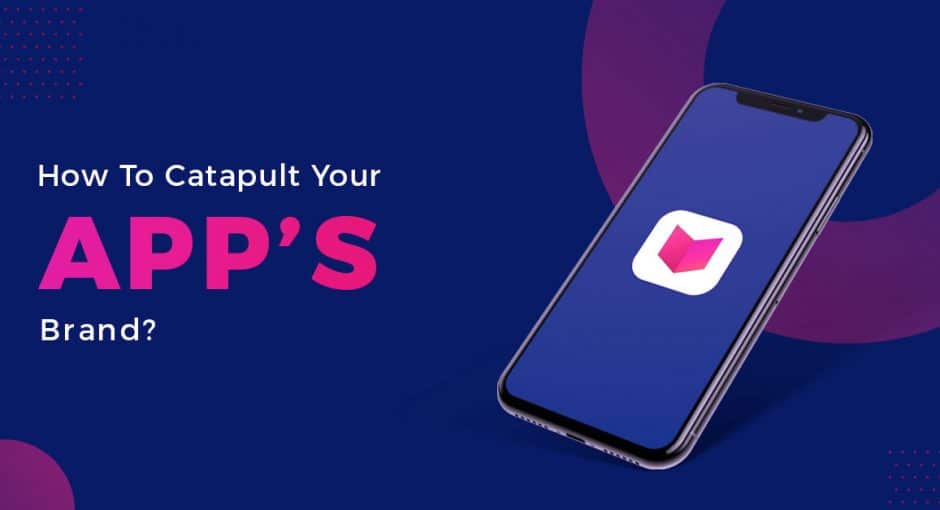When you build an app, a brand gets clung to it. In other words, you need to build your brand as well. It’s that brand which spreads through and creates an appeal for your product. More it spreads and resonates with people, more customers it pulls.
Not everything is about guesswork, as there is science too. In this write-up, we will try to decipher the Keller’s Brand Equity Model, to understand how you can build your brand. We will try to break it down as lucidly as possible.
The concept is simple. A brand is not a static entity. It needs to have a certain vibe. It needs to learn and grow. This is how it can trigger emotions in people. A brand should evoke opinions, perceptions, and feelings in people. And how to do it? By creating experiences around it. This is how you make it a part of people’s life.
Once you establish such an ecosystem, things happen organically, as people develop a trust in your brand and bring more people into this ecosystem through word of mouth. In this scenario, your competitors have no other option but to shy away.
The model represents a pyramid structure, and there are four steps which you need to take to for an effective brand building. At each step, you need to answer a fundamental question, that your customers may or may not ask you, but keep it close to their chest.
Let’s see what these questions are.
Step 1 of Brand Building: Identifying Your Brand – Who Are You?
You cannot just give a random answer to such a question Also, you can’t say either too much or too little, but whatever you say or project, it has to be definitive. You know your brand in and out, but your customers are still at the periphery, developing their initial perceptions. So you need to make sure that these initial perceptions lead them in the right direction of brand building.
You can’t be spontaneous and need to do your homework.
Dig deep into the market and find a void that your product can fill. There might be similar products filling that void. See how different customer segments are reacting to those products and their branding. See how different segments are streamlining their choices, and choosing one brand over the other.
You need to have a clear idea of how customers will classify your product and brand, once you go into the market. If you get a hold on their decision-making process, your brand building game will find its feet.
This step is all about creating the right USP of your product. If you go wrong here, then everything falls apart. Only if you have the above inputs, you can expect to create a genuine USP.
Step 2 of Brand Building: Discovering Your Brand’s Meaning – What Are You?
Between what you think you are and how customers perceive you, there is a gap, always. You can fill that gap with a well thought out communication.
In the first step, you create your USP. Now, it’s time to make people understand what it is, especially when they aren’t sure about their needs. It’s time to help them with their buying decision.
There are two streams through which you propagate your Brand. One is performance-oriented and the other is perception oriented.
The former is based more on facts and focuses on creating awareness about the product. It can comprise primary characteristics and features; product reliability and effectiveness, efficiency, designing, to name a few.
The latter is more about creating an image and psychological comfort. It’s about creating an environment around customers, where they feel a connection with your brand. It can be done by associating your brand with a greater goal.
Let’s understand this by an example. Suppose there is a brand known for outdoor clothing made from recycled material. When talking about the performance, it focuses on the durability of the material.
And now comes the perception part.
It commits to causes and programs related to eco-friendliness. But how does it help the brand? It gives a strong message of ‘Recycling’, which make customers a part of a bigger purpose. This makes them connect better with the brand.
You need to create a personality of your brand, based on performance and perception. It’s a critical step, and you need to surround your customers with the right kind of experiences, otherwise, it may backfire.
Step 3 of Brand Building: Responding to your brand – How do I feel about you?
Customers either pass their judgments on your brand or express how they feel about it.
When they judge your brand, they consider these three parameters:
Quality: Is there a difference between the product’s perceived and actual quality? This is one question that every customer asks to himself/herself.
Credibility: Does the brand or product is backed by expertise? A positive answer builds trust and likability among customers for the brand.
Relevancy: For customers, it’s less about innovation or state-of-the-art technology, but more about the relevancy of the product.
Based on three parameters, ask yourself the following questions:
-
What can be done to you do to improve the actual and perceived quality of your product or brand?
-
What can be done to make your brand more credible?
-
Does your marketing strategy cover your brand’s relevancy?
If you think in terms of branding, your product needs to evoke feelings in customers, by catering to the above parameters. What kind of emotional response you generate among customers matters. Your
According to this model, there are six positive feelings that a brand can evoke, namely warmth, fun, excitement, security, social approval, and self-respect.
When preparing your marketing strategy, which may include Facebook, Instagram, or even Youtube marketing, make sure it focuses on at least one of these feelings. Also, think about what can be done to enhance these feelings in your customers.
Step 4 of Brand Building: Resonating With Your Brand – How Much of a Connection Would I Like to Have With You?
It’s the last frontier for you as a brand. If you strike resonance with customers, you will sit at the top. It’s the most desirable scenario, but you are required to understand resonance and at what levels it’s attained.
Keller’s Equity Model discusses three traits of customers to explain resonance:
Behavioral loyalty: Do customers interact with your product repeatedly? In case of an app, do they eagerly wait for an update, instead of going to a competitor’s app? If they do, then it shows loyalty and resonance to some extent.
Attachment: Do customers think of your product as a special purchase, by going for it on special occasions? If yes, then it shows resonance to a greater extent.
Active engagement: Being a part of an ecosystem isn’t just about purchasing a product and taking a back seat. It’s about interacting with other customers on different forums, writing and posting blogs on different platforms. It’s about joining the brand’s bandwagon.
You can measure the degree of resonance in your customers, based on the above traits.
Through this write-up, we have given you a glimpse into customers’ psyche and how they form a relationship with a product. You may also want to learn about social media branding. Do share your views and queries in the comment section.





